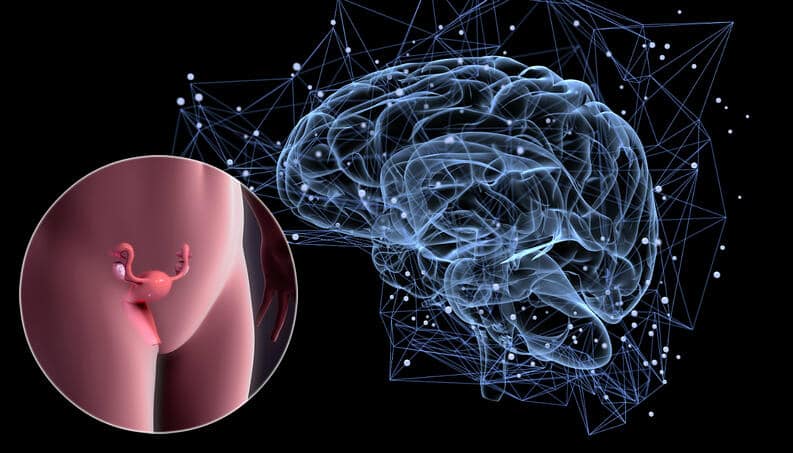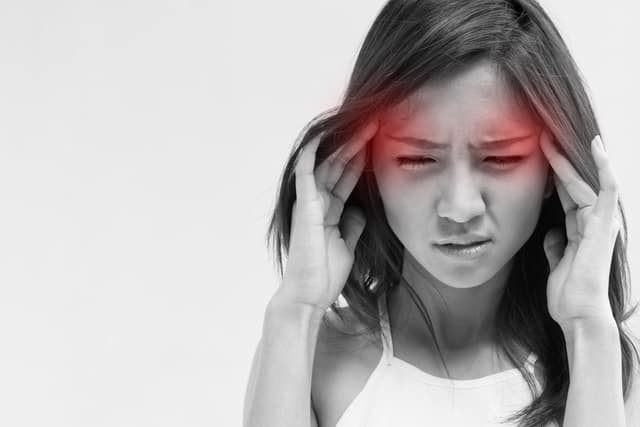Menstrual migraine is a problem that affects thousands of women. Learning how to remedy it is essential to avoid discomfort.
Suffering from headaches is an illness that plagues the entire world on a daily basis. Whether they are strong or weak, it is common for pain to stop the day from flowing from time to time and disrupt your well-being. However, there are still cases in which this discomfort goes far beyond what one imagines. This is the reality of migraines, and especially menstrual migraines. In this sense, women are more likely than men to have migraine-type headaches, precisely because of the change in hormones during the menstrual cycle.
It is common for menstruation to be accompanied by some symptoms that affect many women during the cycle. A headache, for example, can appear in two ways. In addition to menstrual migraine, there is also tension headache, both of which occur during the menstrual period.
However, in addition to the enormous discomfort that menstrual migraines are, their onset is also accompanied by other symptoms. The pain is often so severe that it causes nausea, vomiting, sensitivity to light and sound, and even blurred vision. Therefore, it becomes essential to discover the best ways to remedy the condition in the best possible way. Although pain cannot be stopped altogether, minimizing its triggers makes the problem much less uncomfortable.
Check out everything you need to know about menstrual migraines below. Also learn all types of pain treatments, from scientific and preventive solutions to natural ones.
What is menstrual migraine?

But after all, what is a menstrual migraine? The case is a disorder of very specific and even disabling headaches. Their characteristic feature is that they are throbbing and felt on one side of the head. They can last up to 3 days, and are influenced by hormones, happening a maximum of 2 days before or after menstruation.
In this sense, it is common for menstrual migraines to occur after a drop in estrogen concentrations in the body. This happens just before your period, which causes a chemical imbalance in the brain. Thus, pain appears, accompanied by irritability, fluid retention, breast pain and abdominal cramps. In other words: menstrual migraine is one of the normal changes during PMS.
A striking characteristic of menstrual migraine that differentiates it from other headaches is its intensity. Normally, they tend to last longer and the nausea felt is even greater. Thus, they are called pure menstrual migraines. Furthermore, the problem tends to be more resistant to headache medications, which makes the symptoms even worse.
Treatment

There are several types of treatment for menstrual migraine. First of all, adopting some habits during the period can help alleviate the discomfort, such as:
- Take pain medication, such as analgesics, triptans and anti-inflammatories;
- Rest as much as possible in a place with little light;
- Decrease the pace of work, as stress is a pain trigger;
- Breathe slowly;
- Eat well, preferably vegetables and fruits.
Furthermore, activities that relieve stress such as meditation, walking and other hobbies are also essential to prevent further crises from occurring. In any case, check out other types of migraine treatment below that can also help.
1 – Triptans for migraines

Triptans are a type of medicine used not only for acute migraines such as menstrual headaches, but also common ones. In order for it to be effective, it is important to also take sumatripin the moment the pain starts, even if it is still weak. The longer the delay, the less effective the pain relief medication will be. However, a prescription for such medication may be required. Therefore, consult a doctor before making any decision.
2 – Preventive treatment

In this sense, hormone therapy can also help reduce the frequency of severe migraines. By prescribing combined oral contraceptives, such as the pill and estrogen during the week of menstruation, studies have found that the effect was positive. This way, the drop in estrogen was smaller, which prevented the menstrual migraine from being so drastic. Continuous use of contraceptives helps reduce crises and other PMS symptoms.
3 – Natural treatment

In the case of natural treatment, substances with calming and protective properties of the nervous system are essential. Some examples are teas, such as chamomile, dong quai and sunflower seed. Additionally, lavender compresses can also help a lot.
On the other hand, a balanced diet can also make a difference in the case of an acute migraine attack. It is important that the foods consumed are rich in omega 3 and antioxidants. Therefore, ginger, passion fruit and fish should be part of your menu. Stimulants like coffee should be avoided. Also check out other recommendations that can help a lot in the case of a menstrual migraine:
- Get plenty of sleep and adjust your sleep schedule;
- Reduce stress levels. In this sense, avoid situations, feelings and periods that are triggers for headache attacks;
- Avoid extreme temperatures, as the radical change between heat and cold can cause pain;
- Always prefer darker, quieter spaces, without loud noises and intense lighting.
So, what did you think of this article about menstrual migraines? If you’re interested, take the opportunity to check out Migraines during pregnancy: best ways to avoid the problem
Sources: Clue, Tua Saúde, Dr. Alexandre Feldman, Integrated Neurology, International Headache Society
Images: Tua Saúde, Tua Saúde, Secad, Barão de Cotegipe, Vix, TV Jaguari

Sign up for our newsletter and stay up to date with exclusive news
that can transform your routine!
Warning: Undefined array key "title" in /home/storelat/public_html/wp-content/plugins/link-whisper-premium/templates/frontend/related-posts.php on line 12
Warning: Undefined array key "title_tag" in /home/storelat/public_html/wp-content/plugins/link-whisper-premium/templates/frontend/related-posts.php on line 13




